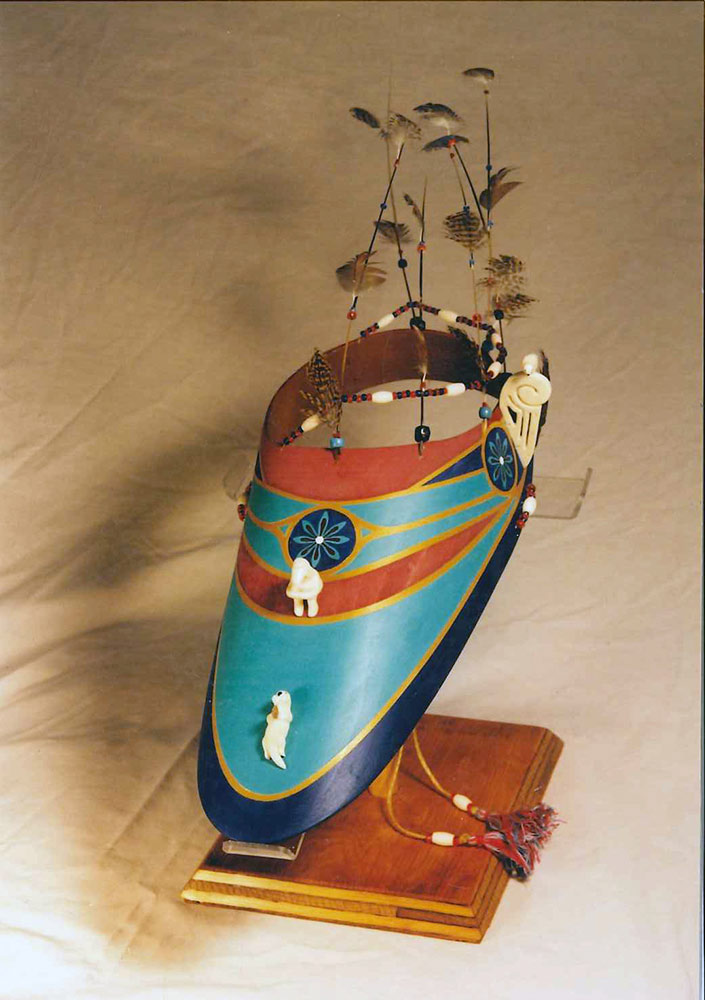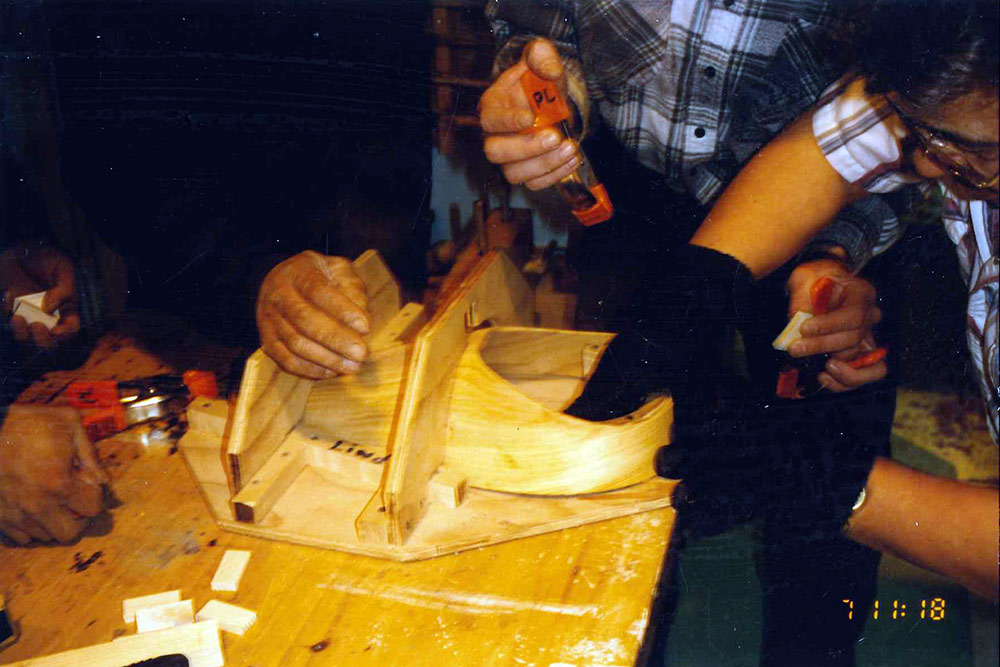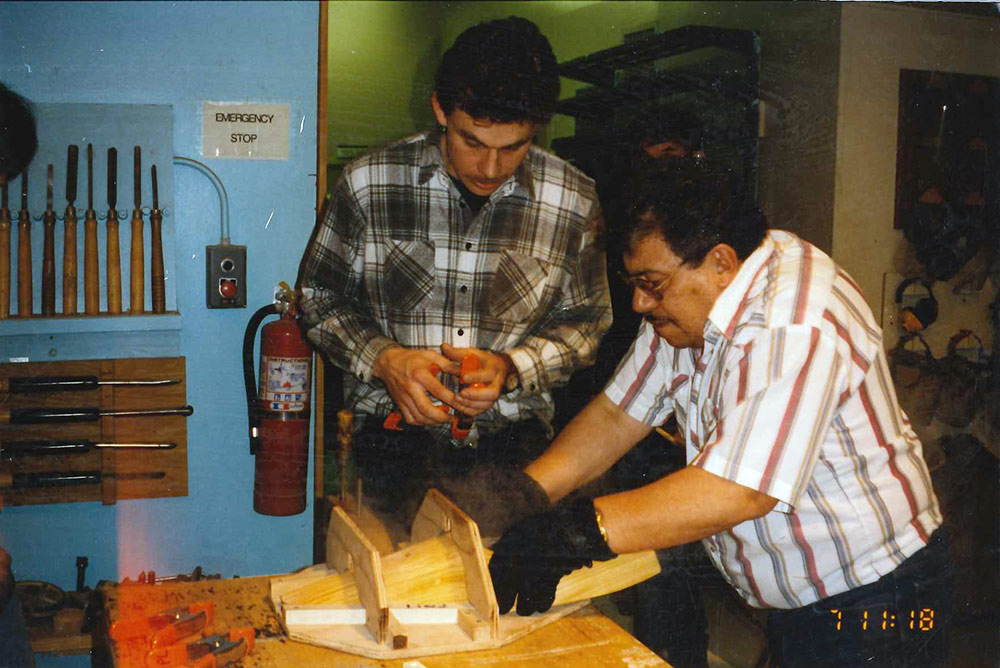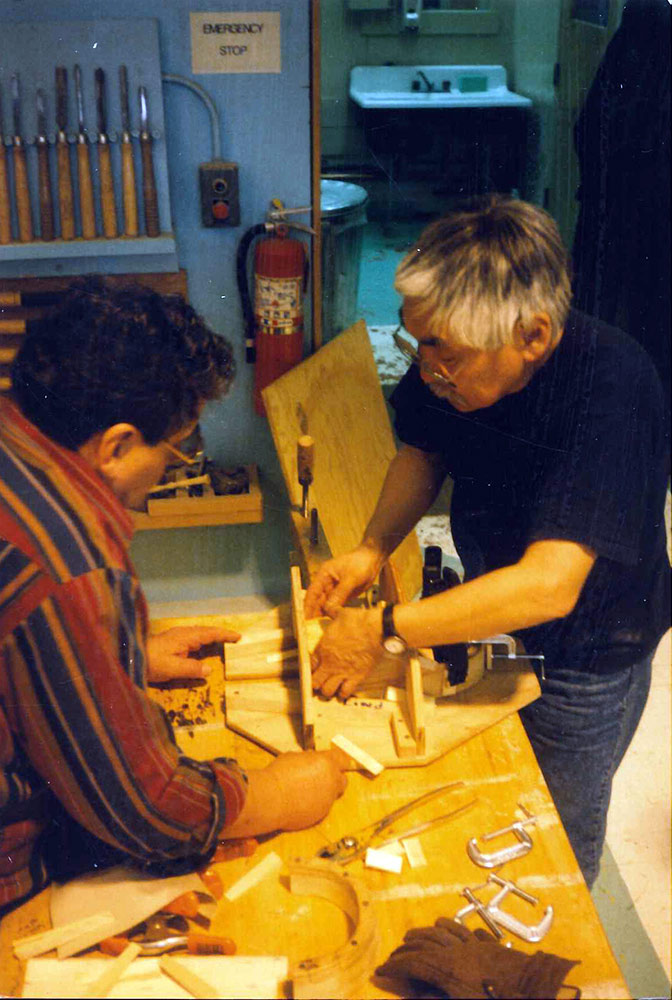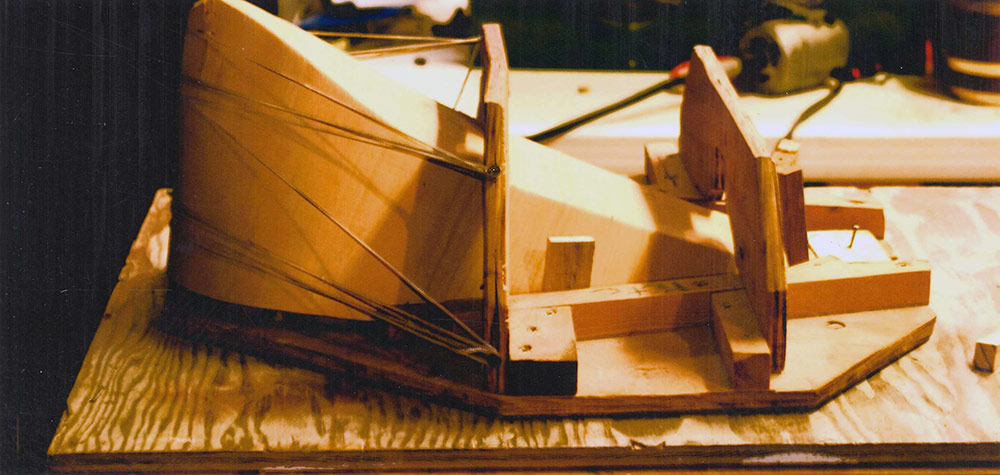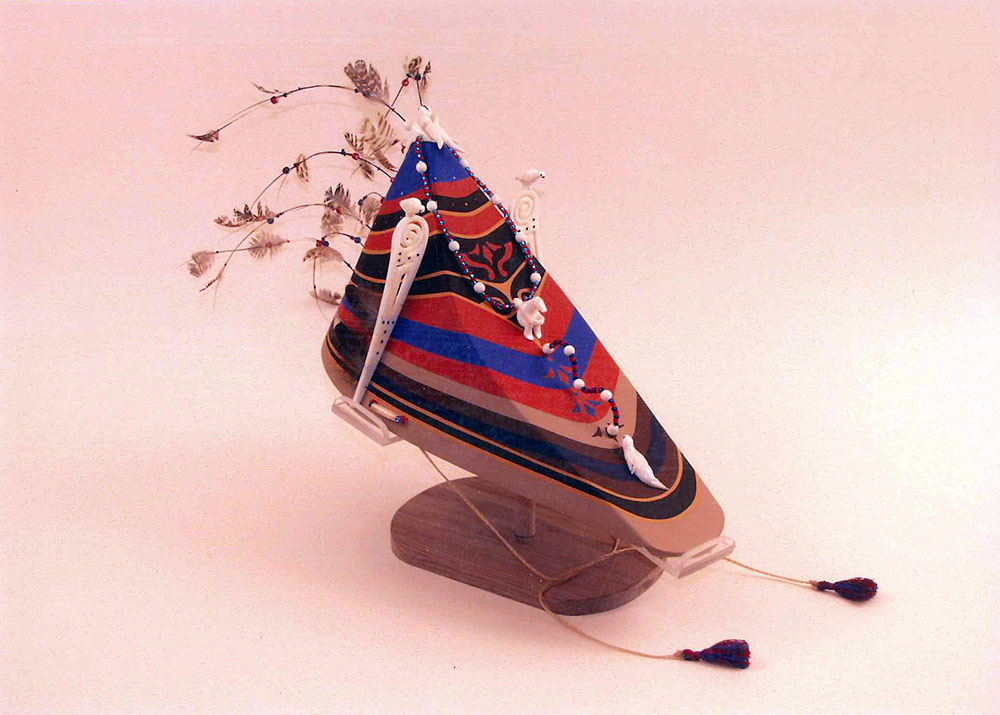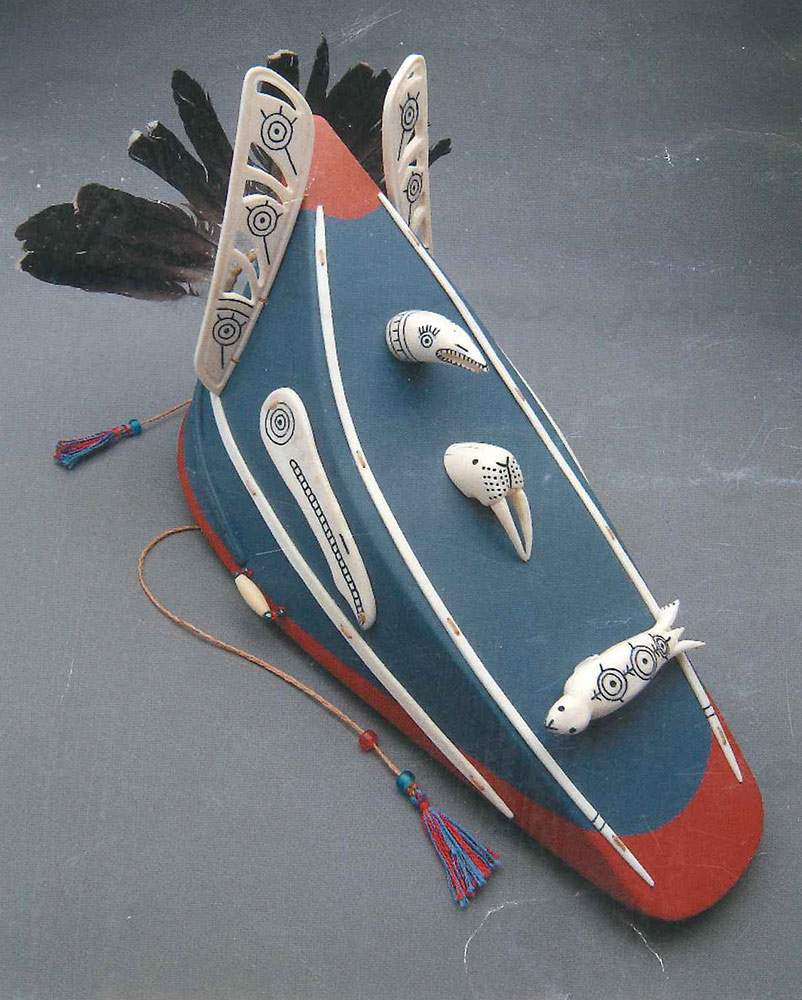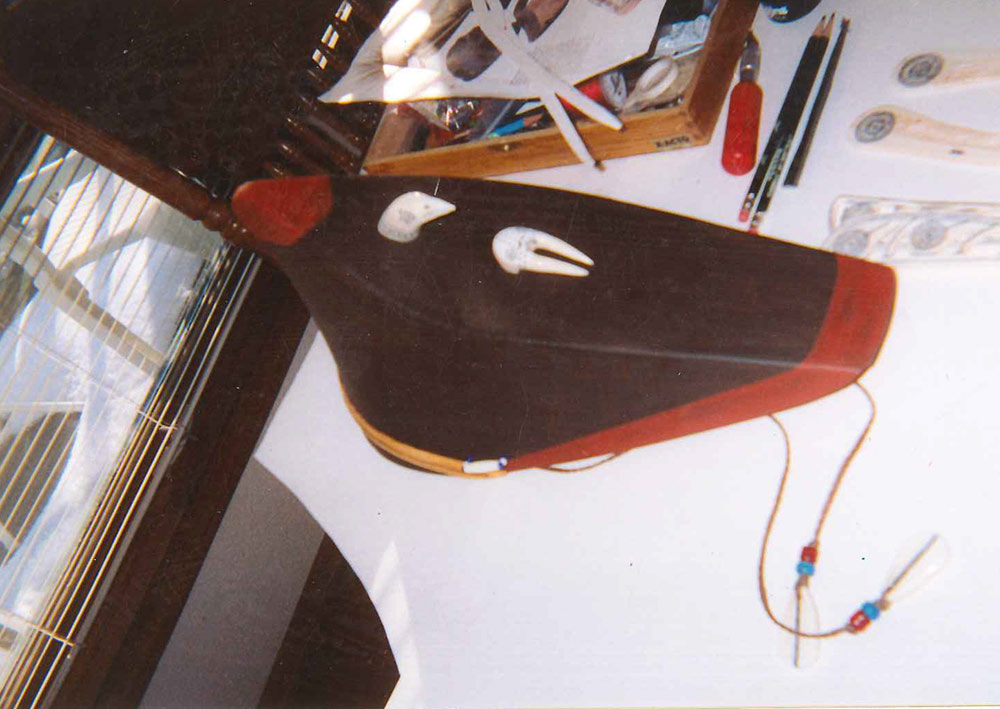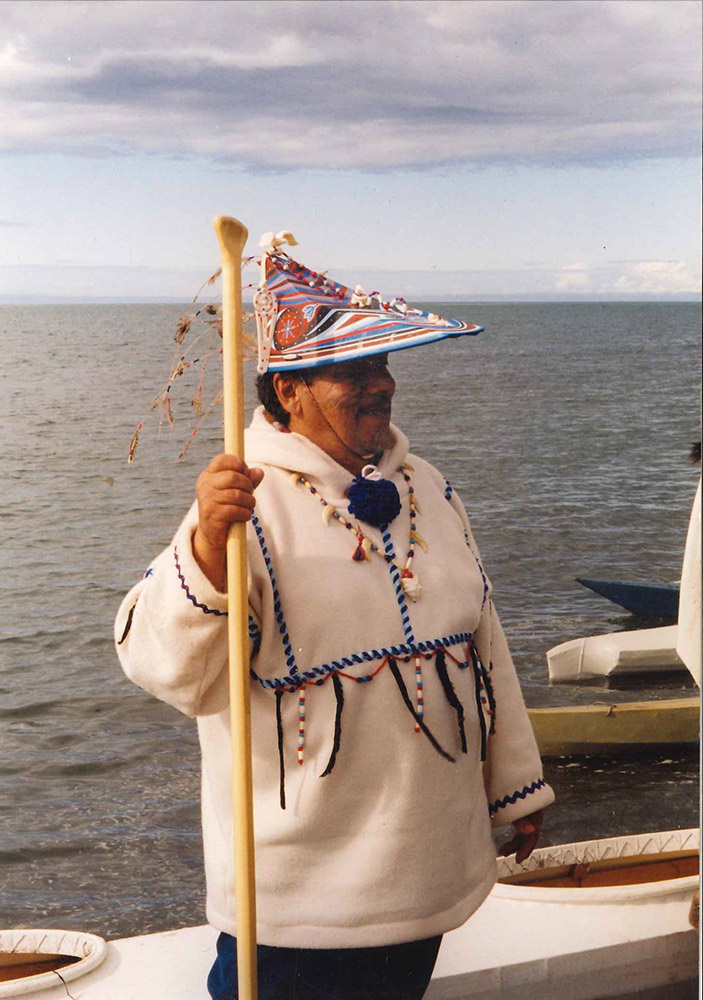Traditional Visors
Aleut/Alutiiq Hunting Visor
Materials: Bentwood, walrus ivory, naturally found ocher stain, paint, glass beads, seal and/or sea lion whiskers, ptarmigan and/or grouse feathers, moose and/or caribou sinew and colored cotton yarn.
Visors were both functional and spiritual. Among the functions, a ridge runs mid line inside the visor that is used to line up a spear. The visor also shields the hunter from the sun and sea spray. The whiskers and beads on the visor also served as a warning of escalating wind on the open sea, prompting the removal of the visor and the return home. A visor worn in high winds could cause a kayak to capsize.
Spiritually, the visor gives the hunter power beyond him to brave the ocean and its dangers. It masked him from his prey, hiding his human identity. It was believed it gave the hunter transcendental abilities to use the skills of an animal or bird to aid him with added hunting skill.
Visors also denoted status and skill. A short visor had little decoration and was worn by young men learning to hunt. Skilled hunters used a longer visor. The amount decoration shows the hunters expertise. Closed crown visors were worn only by the chief and high ranking members.

This visor us used by one who is learning hunting skills.
11.5″ L x 8″ W x 7″ D

This visor would be worn by a skilled Hunter
16.5″ L x 8.5″ W x 7″ D

Closed crown visor were worn only by chiefs, and high ranking members of the tribe.
16″ L x 8″ W x 4″ D
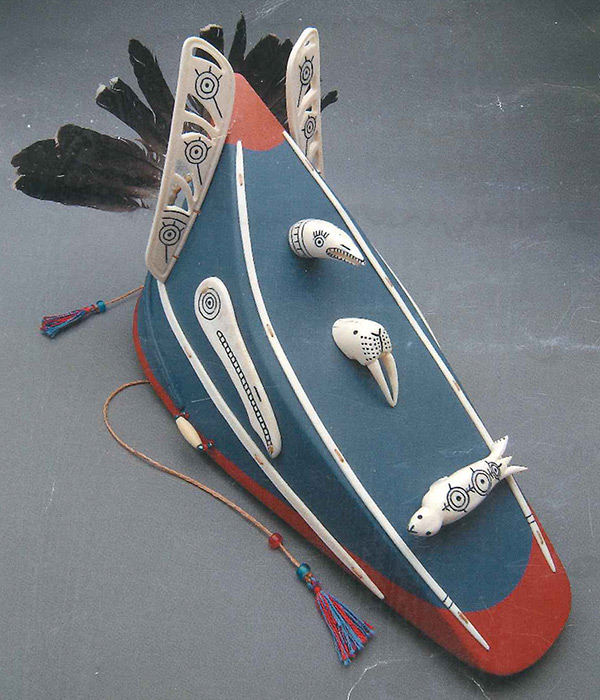
This is a replica of a documented visor in use in 1880. The hunting hat has a fan of bird feathers and walrus ivory carvings.
16″ L x 8″ W x 14″ D

Designed after a documented, mid 19th century visor. The original visor is in the collection of the British Museum in London.
– Materials used in this visor: Bentwood, walrus ivory carvings, harvested ocher, moose
sinew, whale baleen, octopus ink and sealskin ties.
13″ L x 8″ W x 4″ H

Aleut children were taught not to whistle. It was believed that whistling would call up a spirit that could whistle up wind, and make the sea dangerous for travel.
Approximately 16″ H x 11″ W x ? D
Aleut/Alutiq Visor and Mask Prices:
Size noted is basic bentwood measurement)with attached ornamentation sizes are probably close to double.
Beads used, replicate trade beads of the period. (Chinese white hearts)a red bead with
white center. The dark blue of the so-called (Russian trade beads).
Other materials in use are: Bentwood, harvested natural ocher stain, walrus ivory carvings, sea lion and/or seal whiskers, Ptarmigan and grouse feathers, moose and /or synthetic sinew, paint and dyed cotton yarn

